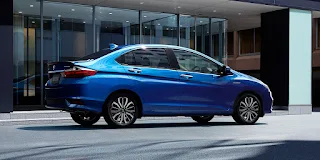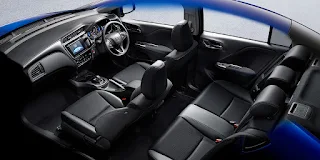Speedo boys of Japan, rejoice. The Honda Civic is back after seven years of being absent in the Japanese market and this time, it's now available in three different styles to choose from; the sedan, the fully-imported hatchback from Europe, and the ultimate Civic experience for speedo boys everywhere known as the Type R.
 |
| 2018 Honda Civic |
 |
| 2018 Honda Civic Hatchback |
 |
| 2018 Honda Civic Type R |
At long last, all three Civics are now available to the Japanese market and while these three models are different in every single way, they both share the same goal to win back the Japanese public after their seven-year absence to their home market. As you may recall, the Honda Civic has stopped on the eighth generation model in 2010 and when the rest of the world got the controversial ninth-generation model, Japan didn't get one until 2015 where the FK2 Civic Type R became the only ninth-generation model sold in Japan within limited numbers. Now that the Civic is back for real, this tenth-generation model is ready to show Japan what this Civic is capable of, having been called by the rest of the world as "the best Civic ever."
First, let's analyze the design and for this tenth-generation model, the sedan looks very coupe-like in every tangible angle of perception while the hatchback model doesn't look like the boxy Civic hatchbacks of yesteryear and it's now more of a fastback per se. The new FK8 Civic Type R, which is now the first globally-available Civic Type R ever sold, uses the hatchback as its basis and makes it even loud enough for speedo boys to go "Fast and Furious" with it, just like the good old days. Either way, it's now the best-looking Civic ever made and you can forgive all its chinks around its well-sculpted lines.
 |
| 2018 Honda Civic interior |
 |
| 2018 Honda Civic Hatchback interior |
 |
| 2018 Honda Civic Type R interior |
Step inside on the interior and on a normal Civic saloon and hatchback, it doesn't feel like your Daddy's Civic anymore. In fact, it's so nice to live with and you can forget about the moment when you bought your Dad the wrong Civic for a birthday present. In fact, it's a definite improvement compared to the previous, not-for-Japan Civic my family currently having. The dashboard looks more similar to the old FK2 Civic Type R but way below, it kinda resembles like the old Porsche Panamera, minus the complicating stuff. It's even roomier in the back as well and in the case of the hatchback models, especially the Type R, there's a plenty of space for some old gym equipment your brother-in-law is selling online. Talk about family matters, am I right?
 |
| 2018 Honda Civic |
 |
| 2018 Honda Civic Hatchback |
 |
| 2018 Honda Civic Type R |
Speaking of family matters, all three Civic behave rather differently not just by their origin but also the way it moves. In the case of the normal variants, the Civic is powered by a 1.5L VTEC TURBO engine but power outputs differ in two body styles. The Japanese-built FC-spec Civic Sedan produces 173PS of power while the Civic Hatchback, fully imported from Europe, produces 182PS of power output. The sedan is mated exclusively with the CVT gearbox while the hatchback is mated with either a six-speed manual or a CVT gearbox. What's the difference? Well, the Japan-made sedan is made mostly to be comfortable family car your dad's using it for work or for leisure trips and nothing else to expect from being a normal saloon car that returns 19.4km/L of fuel efficiency while the Euro-imported hatchback model is the more dynamic alternative to your dad's saloon variant. Sure, it may have 18.0km/L of fuel efficiency but because it's fresh from the only country set to leave the European Union, the way it moves is somewhat reminiscent of European hatchbacks and it's so engaging to drive than the saloon variant because of its Euro-tuned dynamics. In conclusion, the sedan is made for efficiency while the hatchback is made for dynamism. Nothing else to talk about, especially when both of them come with Honda SENSING, a wide array of safety tech that will be beneficial in today's traffic conditions.
Now, onto the FK8 Civic Type R, the hatchback that dominated the Nurburgring, and because this is the first-ever Civic Type R to be sold globally, including the US (yes, really) and in the Philippines (in limited numbers), this car is too cool to be ignored by most racing games that were poisoned against car enthusiasts by baby boomers. I'm talking about you, Gran Turismo, Forza, and any racing video game I know and love that comes with real-life cars to play with. Unless these producers think like millennials, there's no way they would feature the new FK8 Civic Type R in racing games of today. In fact, apart from the impressive Nurburgring record, what those folks behind great racing games who are stuck being baby boomers who sourced cars from the baby boomer era from used car lots will miss is the newly improved chassis dynamics that were fine tuned to become the ultimate front-wheel drive track weapon as well as the upgraded 2.0L VTEC TURBO engine that produces 10PS more than the previous FK2, delivering 320PS of power and 400Nm of torque, while mated exclusively to a 6-speed manual gearbox.
When you engage the Civic Type R to +R mode, handling becomes more responsive and direct and in a racetrack, the new Civic Type R's ballistic dynamics is what every speedo boys in the world salivating for and what every people behind racing games acting like baby boomers are going to miss at when they ignore it for an old one and between you and me, that new Civic Type R is too ballistic to ignore and this should make the ideal warning shot to people behind Forza, Gran Turismo, or any racing video games we are familiar with to feature it or else. Come on, we're waiting for your response.
It's been an honor for Honda to bring the Civic back after its seven-year drought in the home market and with different kinds of Civics to choose from; from the efficient Japan-made saloon, the lively Euro-made hatchback, and the ultimate Type R ever made for the world over, every Civic is a gift to treasure it for lifetime, almost, and what would Honda be without the Civic.
Oh yeah, if you're asking for how much these Civics cost, listen up; the sedan starts at 2,650,320 Japanese Yen (around $27,000), while the fully-imported hatchback starts at 2,800,440 Japanese Yen (around $28,500), and the Type R starts at an utterly expensive 4,500,360 Japanese Yen (around $45,400). All of these Civics are available to order and it will be on sale at most Honda dealerships beginning late September.
Photo: Honda Motor Co., Ltd.



















































